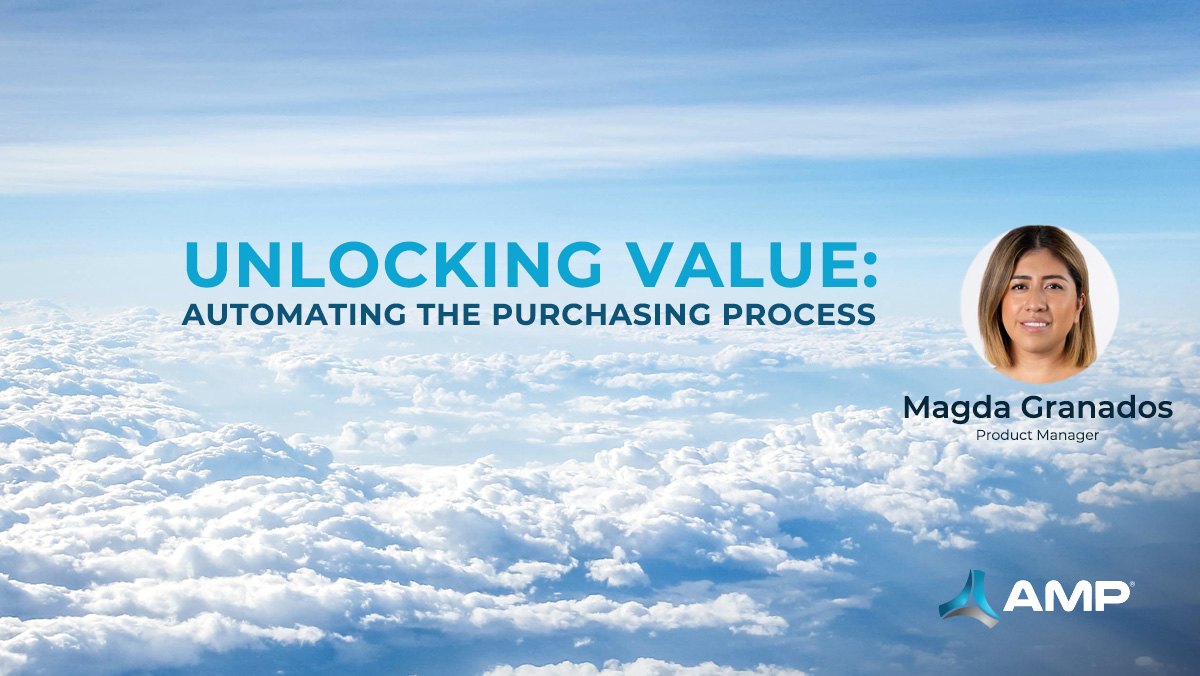By Magda Granados
In recent years, the aviation industry has seen the automation of the purchasing process gain greater relevance. While there are certainly challenges associated with this change, the potential for automation to deliver significant value to the purchasing process, through both time and cost optimization, is undeniable.
First, one must understand the impact of globalization on the supply chain. The market offers a huge variety of products and customers want to have as much information as possible on their purchase options before making a decision. The variety of products available creates an increasingly complex process for purchasers who are typically looking at five key considerations: time, location, availability, cost and quality. One of the trickiest questions when trying to automate the purchasing process is determining how long the customer will wait for a product that meets all of their expectations.
To answer this, automation providers must understand each customer’s needs in terms of inventory, cost, speed, and associated service levels. Any automation solution of value needs to feature an extensive, excellent network of suppliers, flexibility to meet the demands of different types of customers, and the ability to reduce costs and increase efficiencies. The solution must address these needs of purchasing customers, while simultaneously valuing suppliers as essential strategic partners.
For purchasers, implementing an automated purchasing process requires an internal transformation within procurement teams, including a shift in culture and mindset. The traditional procurement approach, focused solely on acquiring materials at low costs with rapid deliveries, has significant limitations. For instance, manual procurement is hampered by both its lack of visibility to all available market offerings and by its subjective evaluation of those offerings it does identify. This results in missed opportunities that come from overlooking suppliers that might be the most suitable to meet all purchasing objectives. In addition, manually evaluating risks associated with each purchase can be complex and error-prone, leading to riskier purchasing decisions. Finally, manual approaches struggle with a lack of adaptability to changes in the market, often leading to purchasing selections that are no longer the most competitive. Procurement teams must evolve their thinking to not only take price and delivery date into account, but to also consider additional factors including product sustainability, location and quality. While it may be challenging to evaluate and consider all of these factors with a traditional, manual approach, the right automation solution is capable of considering all factors efficiently and effectively.
This is why purchasing automation is redefining the supply chain. By more efficiently performing cognitive functions such as pattern recognition, learning, and problem-solving that traditionally required human intelligence, automation solutions enable companies to optimize processes, increase efficiencies, and make faster, data-driven decisions.
Automation technology bridges the data gap that exists in traditional, manual purchasing processes. It helps companies evaluate and select the best purchasing options with speed and agility, even flagging potential disruptions in the supply chain and recognizing any compliance issues that may impact the purchasing process. AI-driven solutions can also help manage performance and ensure compliance with company spending policies –work that can be time-consuming with a manual process. All of these automation benefits enable purchasing functions to transition from focus on low-value, repetitive and routine tasks to focus on higher-value, complex and strategic work.
Automating the purchasing process also plays a crucial role in the efficient generation of metrics and KPIs. It ensures the accurate collection of real-time data, facilitating the creation of reports and the tracking of key performance indicators. This not only provides enhanced visibility into the supply chain, but also enables predictive analysis and cost optimization. By streamlining the procurement process, automation establishes a solid foundation for effective oversight, contributing to informed and strategic decision-making.
In short, automation enables companies to identify new efficiencies, reduce waste, optimize resources, understand trends and changes in their markets, comply with regulations and industry standards and detect the first signs of any failures or anomalies in their processes. As companies begin to experience the benefits of large-scale automation, they will increasingly realize time and cost savings and gains in efficiency and profitability. The transition to automation presents an opportunity for procurement leaders to elevate their standing and drive strategic value for their businesses.
For more information, send us a message to sales@airlinemro.parts. We will be happy to assist you!

